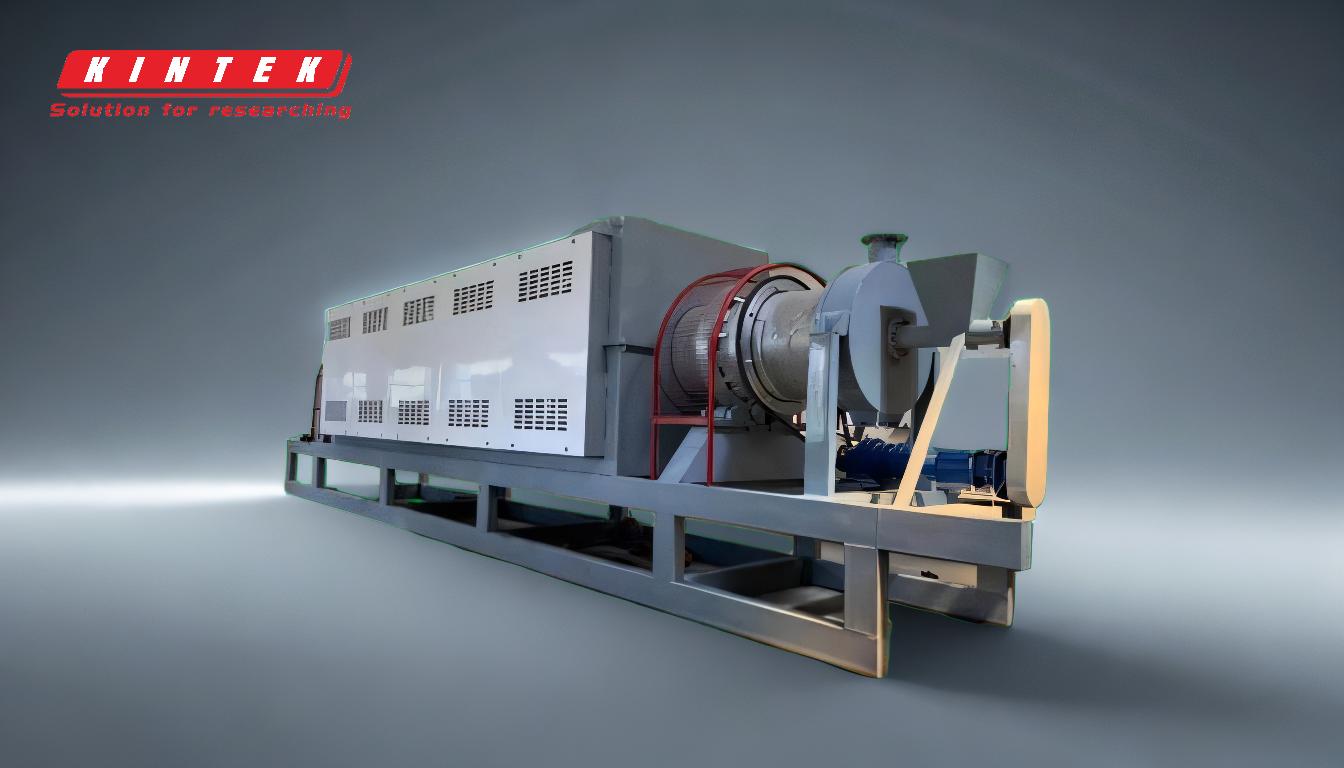Slow pyrolysis is a thermal decomposition process that occurs at relatively low heating rates, typically ranging from 0.1 to 1°C per second, and is conducted under anaerobic or oxygen-limited conditions. This process is characterized by long residence times, often several minutes to hours, which allow for the production of biochar, bio-oil, and syngas. The rate of slow pyrolysis is influenced by several factors, including heating rate, temperature, residence time, feedstock composition, and particle size. Understanding these factors is crucial for optimizing the process to achieve desired product yields and properties.
Key Points Explained:

-
Heating Rate:
- The heating rate in slow pyrolysis is typically low, ranging from 0.1 to 1°C per second. This slow heating allows for a more controlled thermal decomposition of biomass, leading to higher yields of biochar compared to fast pyrolysis. The slow heating rate ensures that the biomass undergoes a more thorough carbonization process, which is essential for producing high-quality biochar.
-
Temperature:
- The temperature range for slow pyrolysis is generally between 300°C and 600°C. Within this range, the highest treatment temperature (HTT) has a significant impact on the final product characteristics. Lower temperatures (around 300°C to 400°C) favor the production of biochar, while higher temperatures (above 500°C) tend to increase the yield of non-condensable gases. The choice of temperature depends on the desired end product, whether it is biochar, bio-oil, or syngas.
-
Residence Time:
- Residence time refers to the duration that the biomass remains in the pyrolysis chamber. In slow pyrolysis, residence times are relatively long, often ranging from several minutes to hours. This extended period allows for more complete thermal decomposition and ensures that the biomass is thoroughly carbonized. Longer residence times generally lead to higher biochar yields and more stable carbon structures.
-
Feedstock Composition:
- The type of biomass used as feedstock significantly affects the pyrolysis process and the properties of the resulting products. Different biomass materials have varying compositions of cellulose, hemicellulose, and lignin, which decompose at different temperatures. For example, lignin-rich feedstocks tend to produce more biochar, while cellulose-rich materials may yield more bio-oil. The moisture content of the feedstock also plays a role, as higher moisture levels can affect the heating rate and the overall efficiency of the pyrolysis process.
-
Particle Size:
- The size of the biomass particles can influence the rate of thermal decomposition. Smaller particles have a larger surface area relative to their volume, which allows for quicker and more uniform heating. This can lead to faster pyrolysis reactions and potentially higher yields of pyrolysis oil. However, very small particles may also increase the risk of entrainment in the gas stream, which can complicate the separation of products.
-
Gas Environment and Pressure:
- The atmosphere in which pyrolysis occurs can affect the process outcomes. An anaerobic or oxygen-limited environment is essential to prevent combustion and ensure that the biomass undergoes thermal decomposition rather than oxidation. The pressure within the pyrolysis chamber can also influence the product distribution. Higher pressures may favor the production of biochar, while lower pressures could enhance the yield of gases.
-
Process Optimization:
- To maximize the yield of a specific product (biochar, bio-oil, or syngas), the pyrolysis conditions must be carefully optimized. For instance, low temperatures and slow heating rates are ideal for biochar production, while higher temperatures and faster heating rates may be better suited for gas production. The residence time should be adjusted based on the desired product, with longer times favoring biochar and shorter times favoring bio-oil.
In summary, the rate of slow pyrolysis is determined by a combination of factors, including heating rate, temperature, residence time, feedstock composition, particle size, and the gas environment. By carefully controlling these variables, it is possible to optimize the pyrolysis process to achieve the desired balance of biochar, bio-oil, and syngas production. This makes slow pyrolysis a versatile and valuable technique for converting biomass into useful energy and material products.
Summary Table:
| Factor | Description |
|---|---|
| Heating Rate | 0.1 to 1°C per second; ensures controlled decomposition for higher biochar yield. |
| Temperature | 300°C to 600°C; lower temps favor biochar, higher temps favor gases. |
| Residence Time | Minutes to hours; longer times increase biochar yield and stability. |
| Feedstock Composition | Influences product yields; lignin-rich = more biochar, cellulose-rich = more bio-oil. |
| Particle Size | Smaller particles = faster heating; larger particles = slower decomposition. |
| Gas Environment | Anaerobic or oxygen-limited; prevents combustion, ensures thermal decomposition. |
| Pressure | Higher pressure favors biochar; lower pressure enhances gas yield. |
Ready to optimize your slow pyrolysis process? Contact our experts today for tailored solutions!













